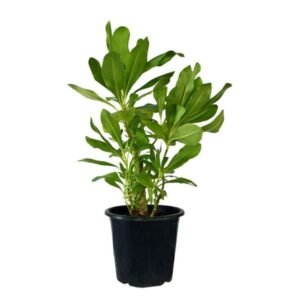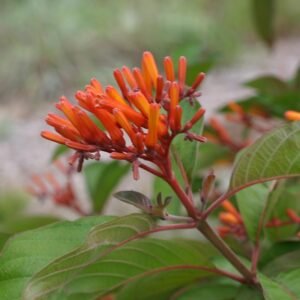Bottle brush, Callistemon citrinus
414.2 AED463.0 AED (-11%)
Botanical name:- Callistemon citrinus.
| Scientific name | Callistemon citrinus |
| Common name |
Bottle brush, bottlebrush |
| Temperature requirement | 25-35 °C |
| Humidity | 40-50% |
| Light | Full sun to partial shade |
| Watering | Water everyday &keep moist |
| Pests | Scale insects, thrips |
| Pet friendliness | Not hazardous |
| Maximum plant height | 2-5m |
| Potting mix | Potting soil/red soil/manure/perlite |
| Pot requirement | Good drainage & repot every 1-2 years |
| Nutrition | Apply manure for first 15 days and npk for next 15 days |
| Pruning & training | Remove dead & diseased leaves with sterile shears |
| Common color & season | Red/crimson in may – september |
| Description | The bottle brush, or fursat az zujaj in arabic, is named for its spikes of crimson flowers that appear in spring and summer. Inflorescences with no petals, but instead spikes of bright stamens, radiate from the twig’s end, where they attract butterflies. This native of eastern australia grows as a spreading, evergreen shrub that may be trained into a small tree. Without pruning, it may reach a height of 5 metres and almost the same width. Its lance shaped stiff foliage grows upward and exudes a scent of citrus when crushed. Young leaves are copper coloured and turn deep green as they mature. The fruits are pea sized, woody capsules that release hundreds of tiny seeds. The bark is grey and much fissured. Full sun, dry air and some drought are tolerated, but the tree is prone to frost. Flowering is far less profuse in shady locations. Alkaline soils and even flooding are tolerated, owing to the plant’s origin on riverbanks. High soil salinity results in chlorosis that may be cured by applying iron chelate. Pruning should not be hard, and care should be taken in shaping and trimming. Propagation is easy by seeds or cuttings. Cultivars vary in colour, shape and size: ‘jeffers’ grows more compact with magenta flowers, while ‘splendens’ is an improved selection with red flowers. Other colours are shown by ‘violaceus’, ‘mauve mist’ and ‘perth pink’. Bottle brushes do well in containers, as specimens or grouped. They make a good screen and serve well as flowering hedges. |
























